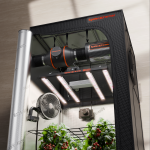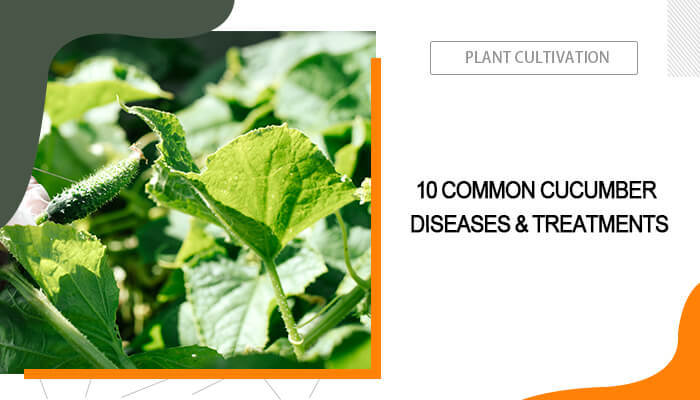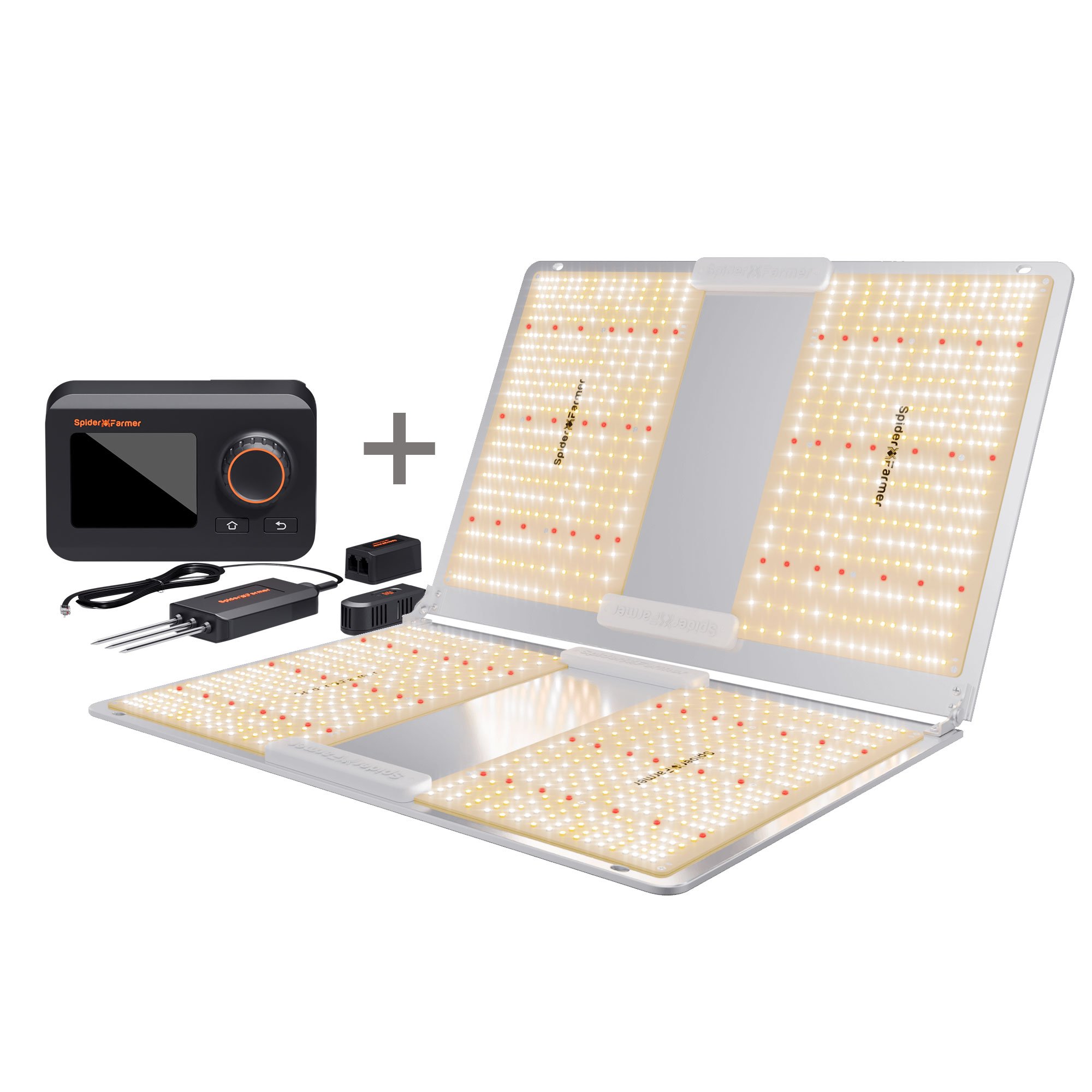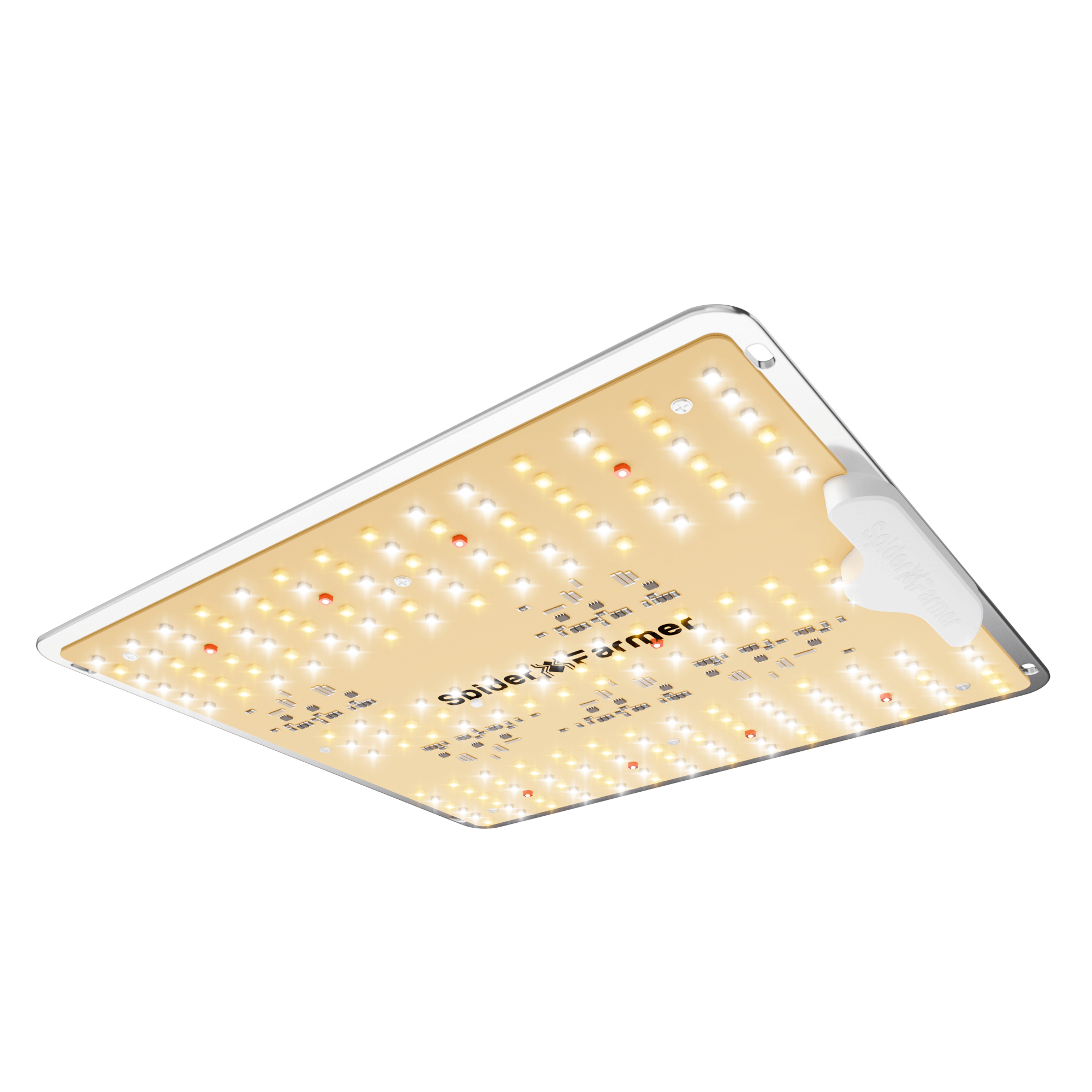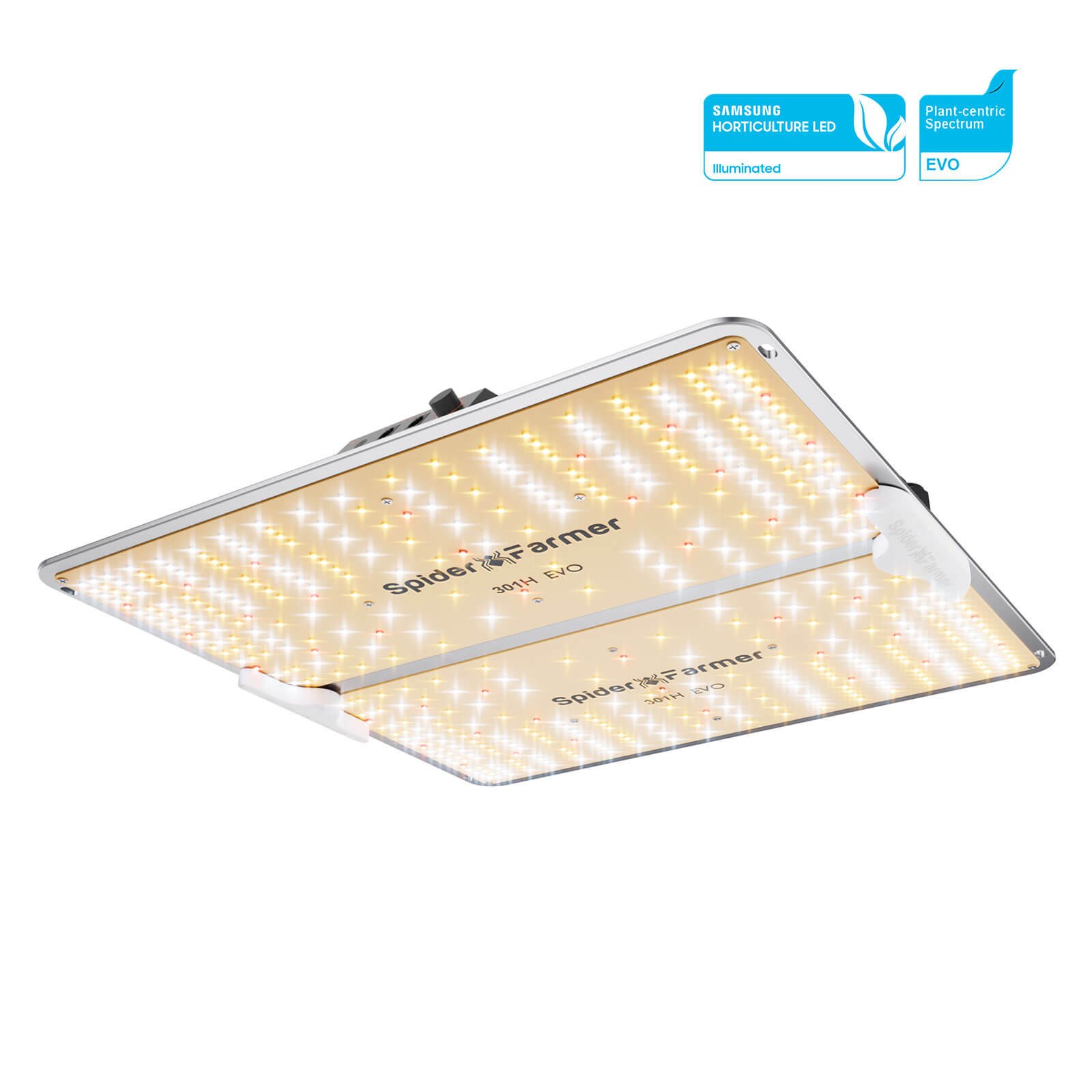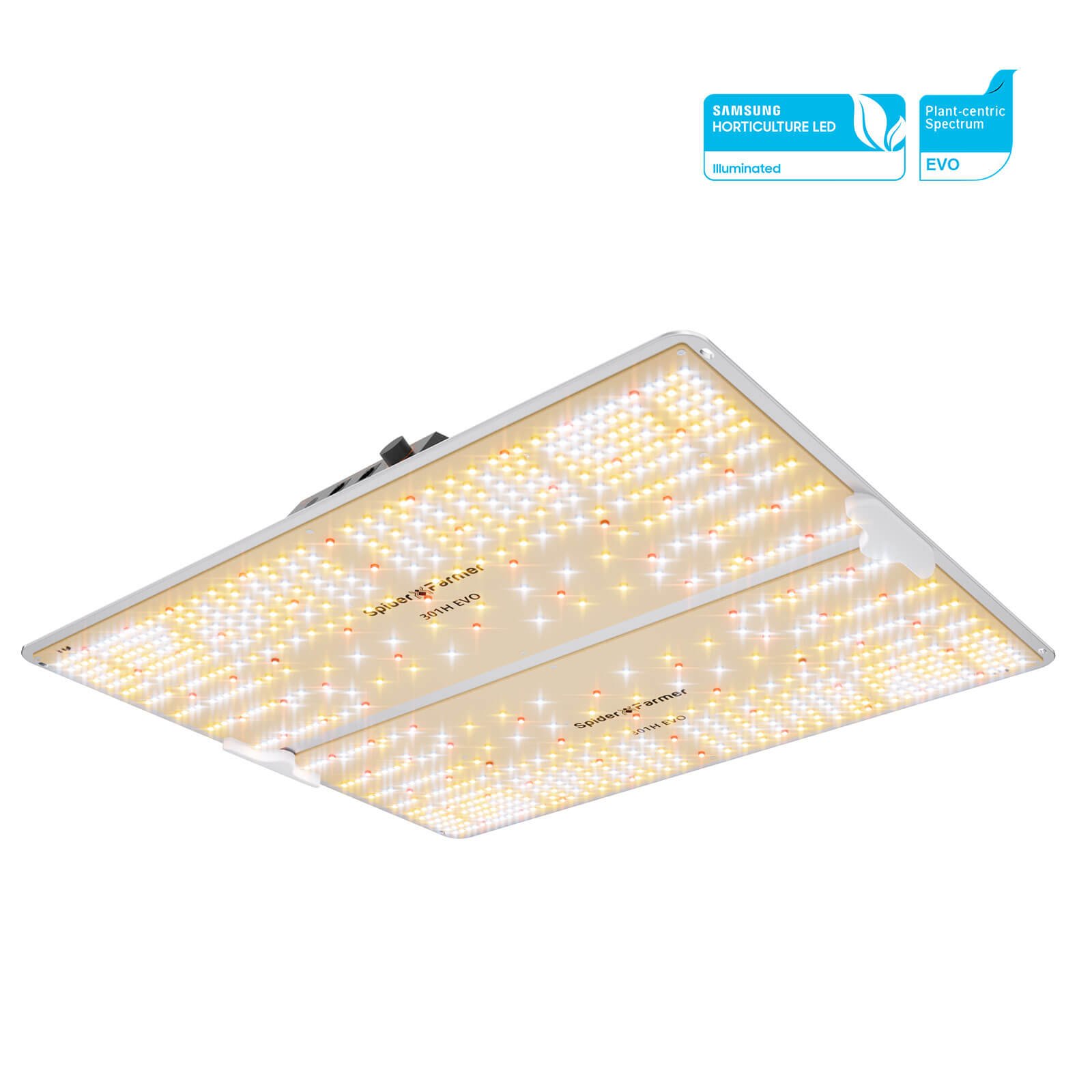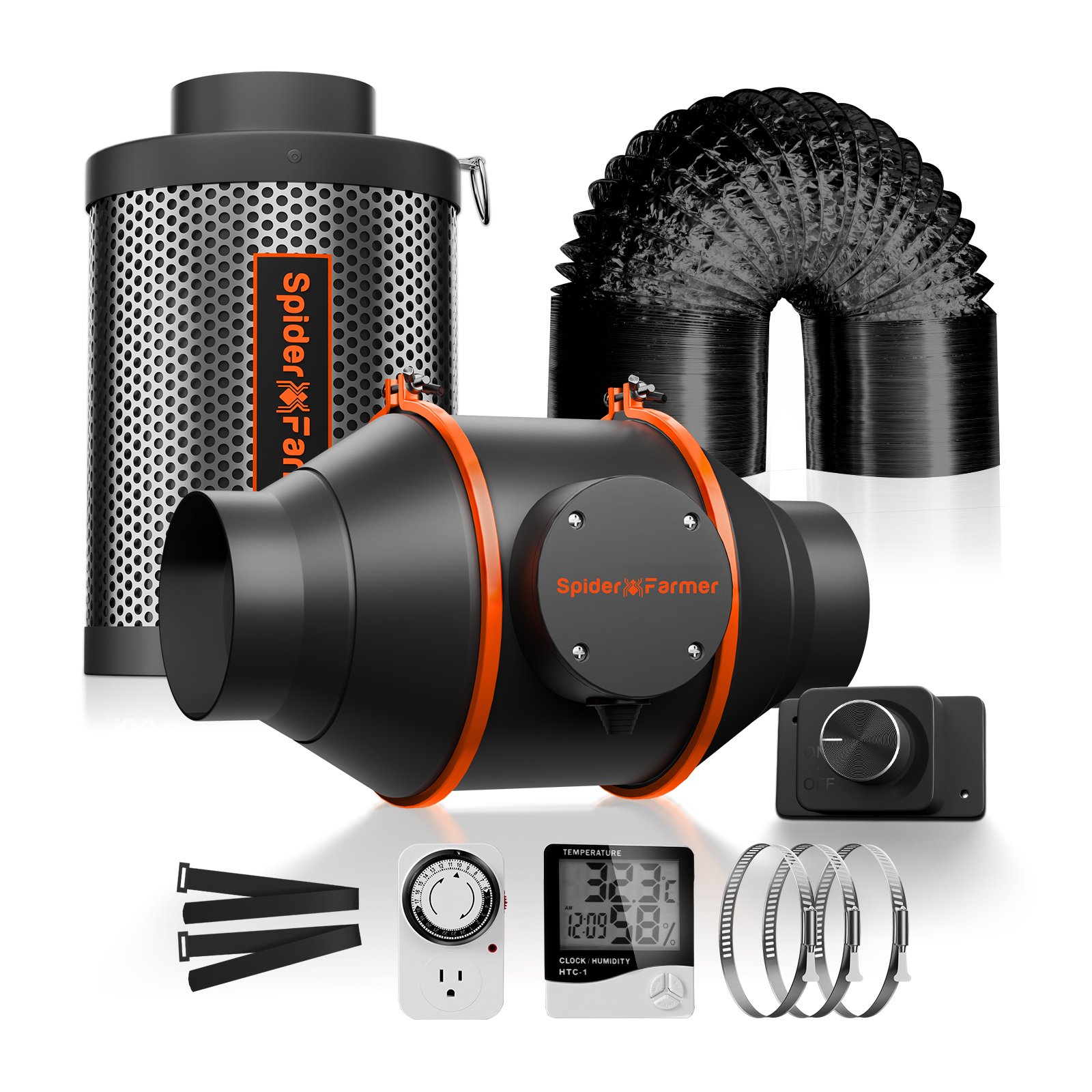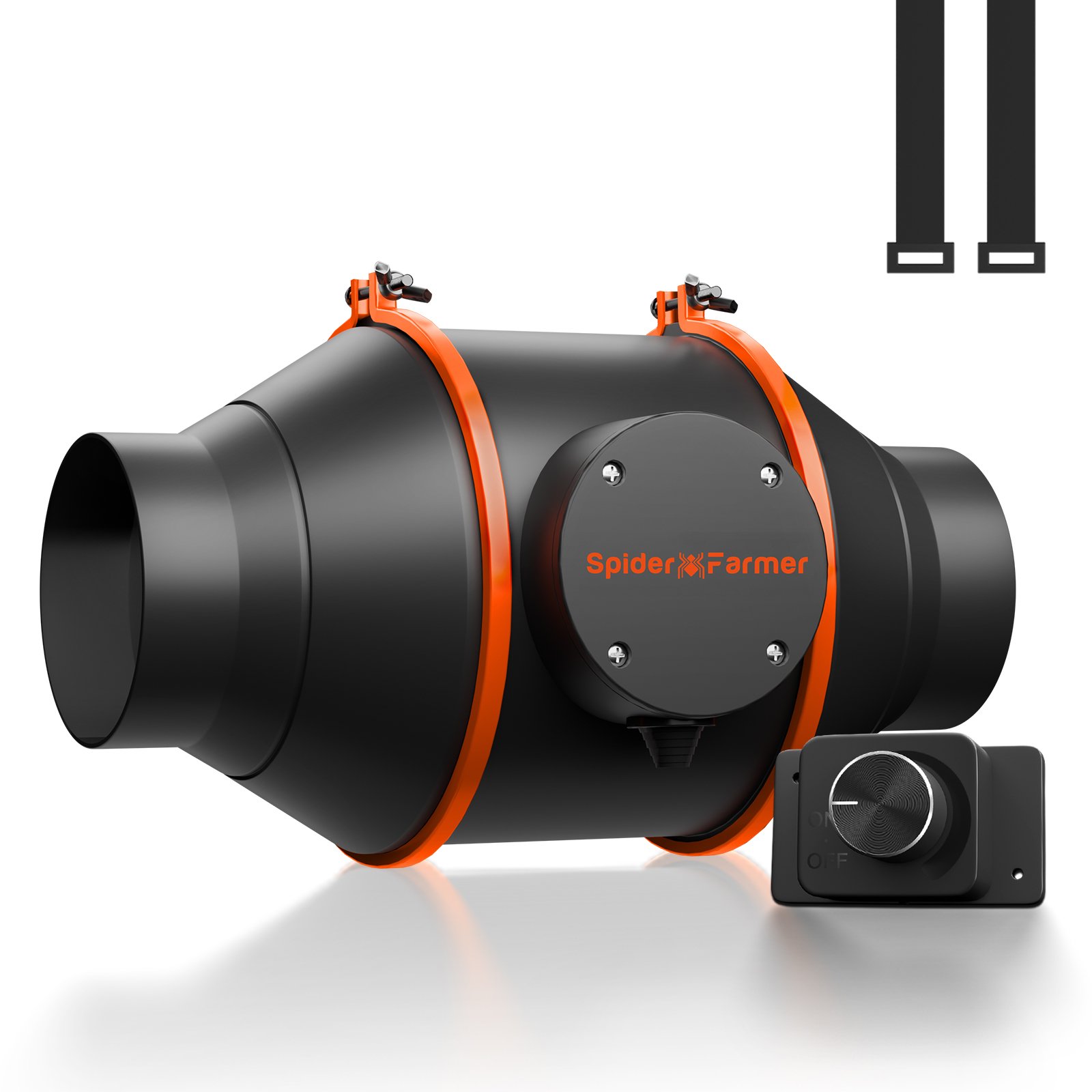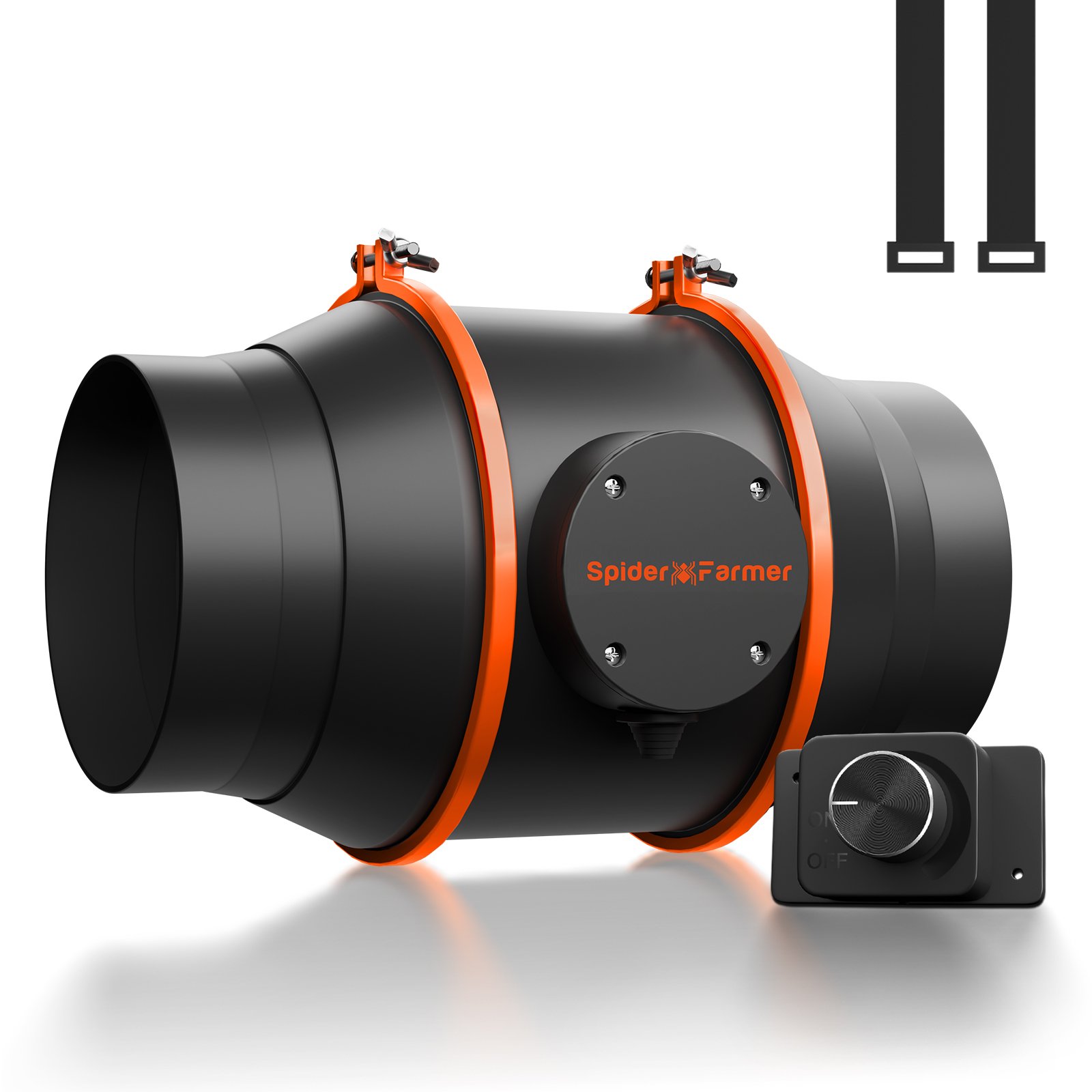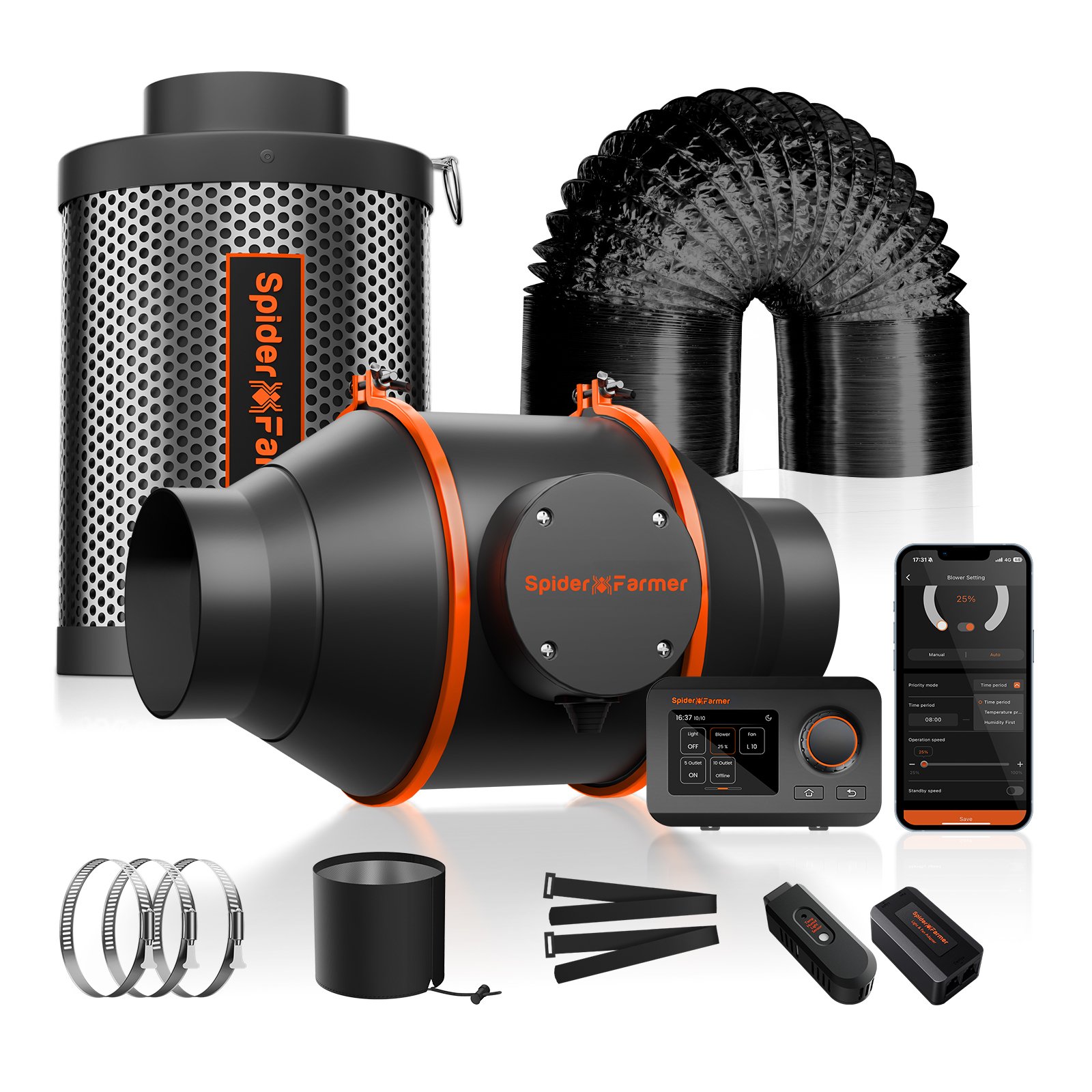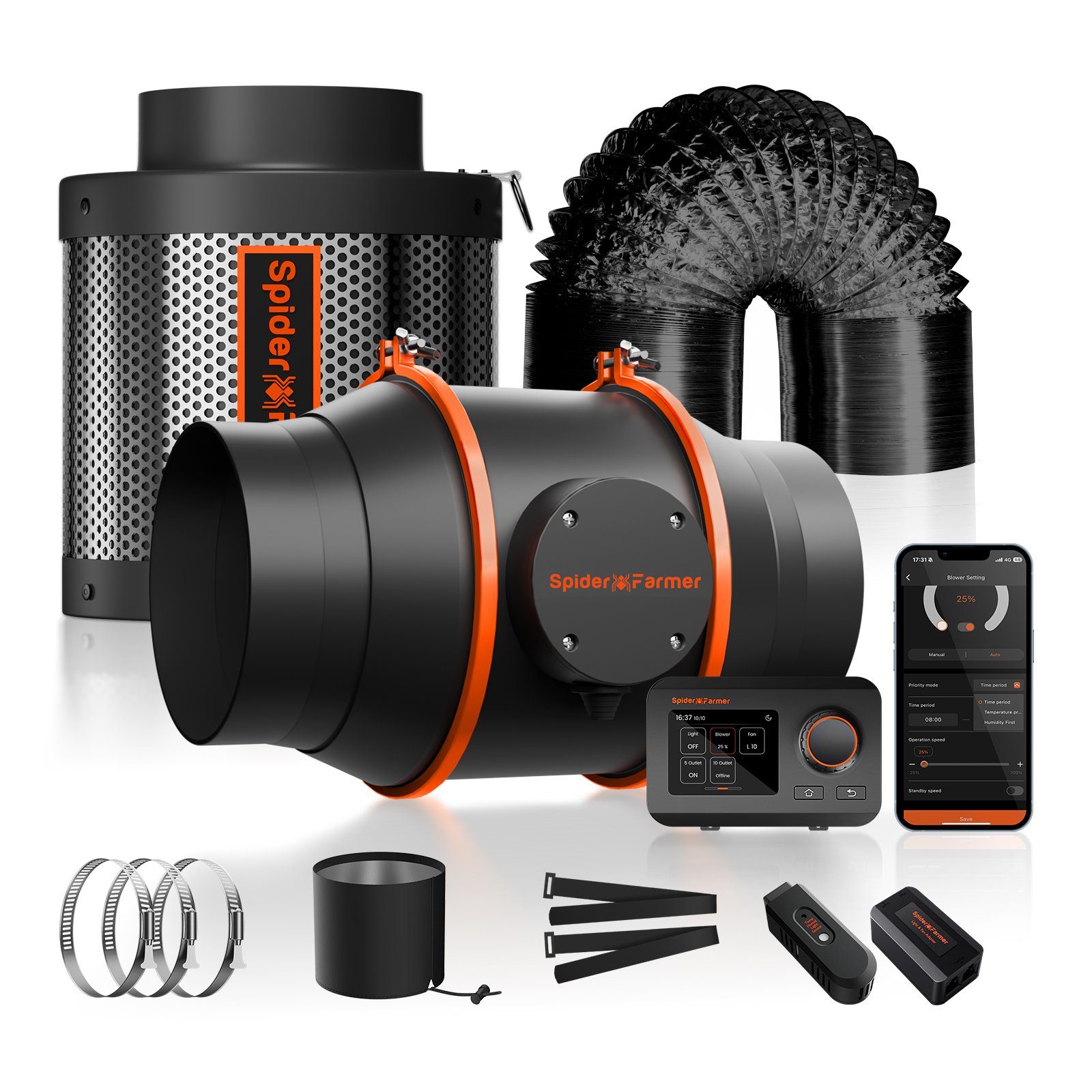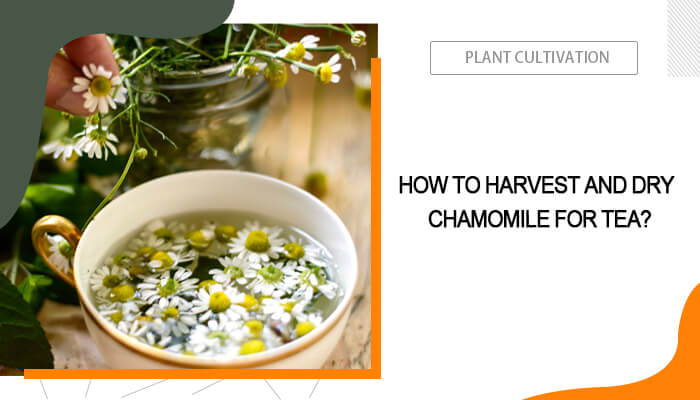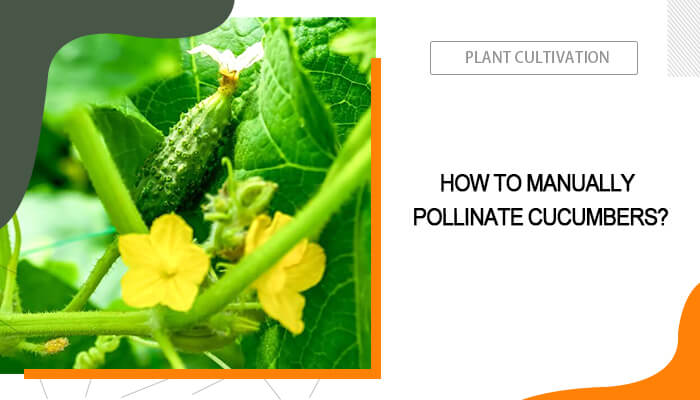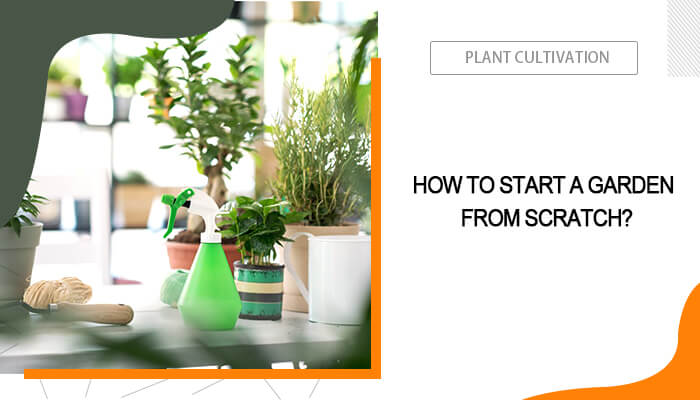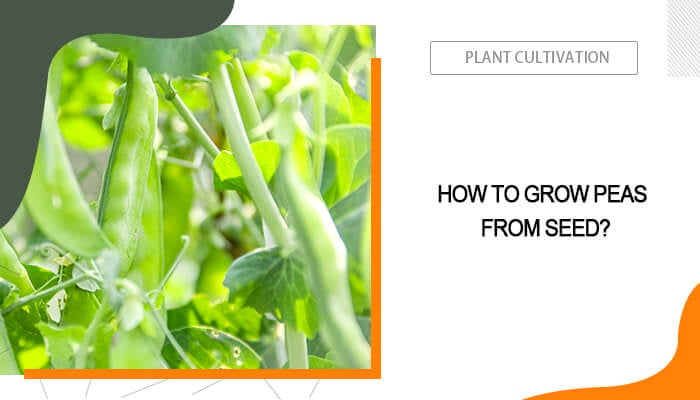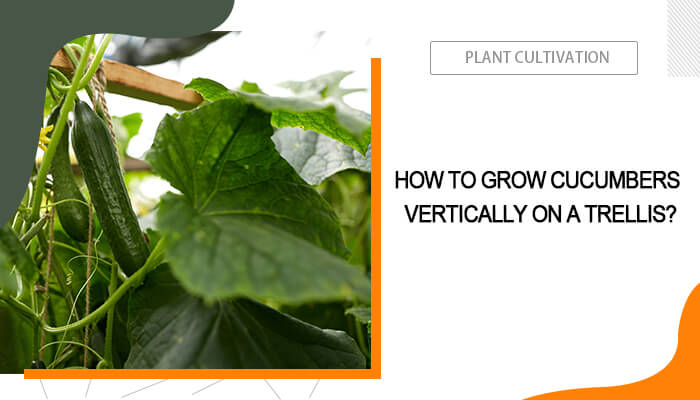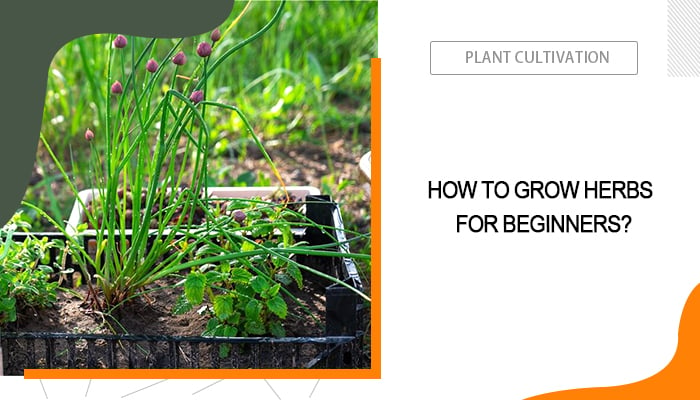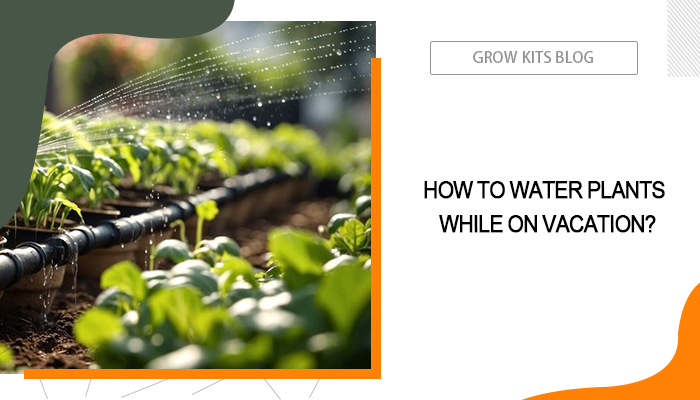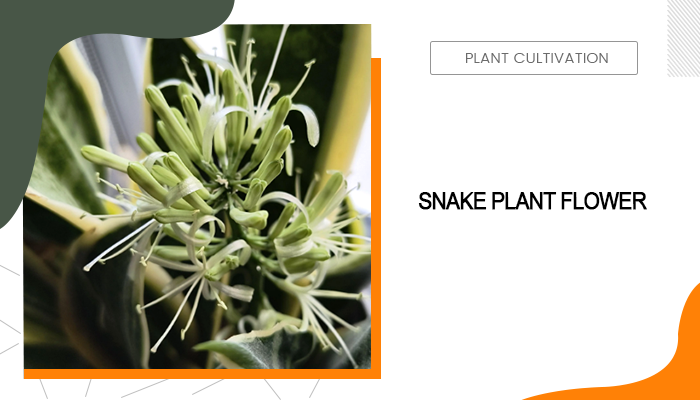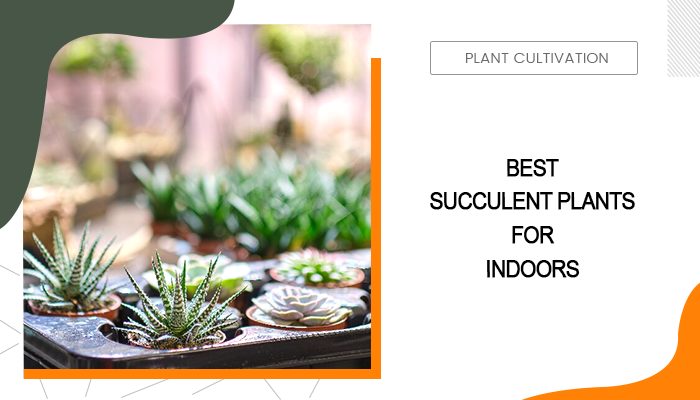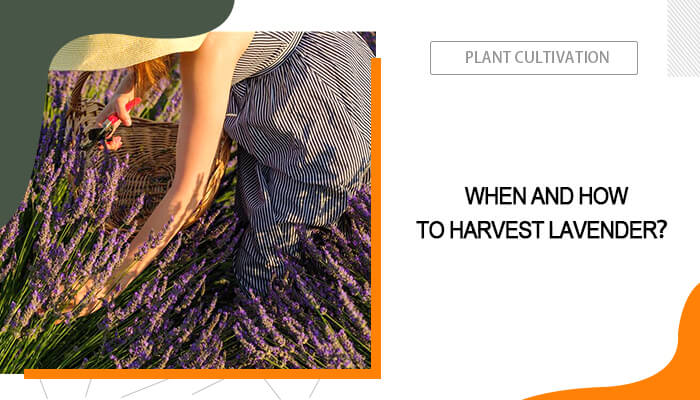Alongside the cucumber plant growth, it may suffer from various cucumber diseases. From cucumber plant bacterial wilt to cucumber fungus disease, these diseases of cucumbers may prevent your plants from growing and fruiting.
This post will reveal the most common 10 cucumber plant issues, exploring why your cucumber plants are wilting or leaves are turning different colors. And this is quite effective when you seek to promote plant growth.
Table of Contents
What Does a Cucumber Plant Look Like?
A healthy cucumber plant is a sprawling vine that typically grows along the ground or can be trained to climb trellises. The vines are long and slender, with tendrils that help the plant attach to supports. The leaves are large, broad, and lobed, often with a rough texture and a dark green color. They are arranged alternately along the stem.
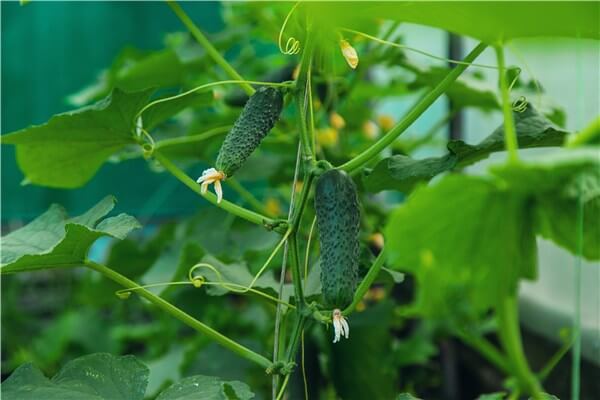
What Does a Cucumber Plant Look Like?
The plant produces small, yellow flowers that are either male or female. The female flowers, once fertilized, develop into cucumbers. The fruits vary in size and shape depending on the variety, but are generally elongated and cylindrical. The skin can be smooth or slightly bumpy, and the color ranges from light green to dark green. Inside, the cucumber contains numerous small, edible seeds. Overall, the cucumber plant has a lush, green appearance and is known for its rapid growth and prolific fruit production.
What Is the Major Disease of Cucumber?
The major disease affecting cucumbers is downy mildew, a fungal infection caused by the pathogen Pseudoperonospora cubensis. It thrives in humid conditions and causes yellow spots on the upper leaf surfaces, with a fuzzy, grayish growth on the underside. This disease spreads rapidly, leading to leaf loss and reduced yield.
Other significant cucumber plant issues include powdery mildew, which forms white powdery mildew on leaves and stems, and bacterial wilt, which causes plants to wilt and die. And viral infections, such as cucumber mosaic virus, can cause leaf mottling and deformity.
In the following parts, we’ll focus on each disease of cucumbers, explaining the causes behind the common cucumber problems and how to prevent from them.
Top 10 Cucumber Diseases You Need to Notice
In this part, we’ll explain the causes behind the 10 common cucumber problems and learn how to prevent them.
Cucumber Plants Not Growing
Cucumbers not growing can be attributed to several factors, including poor soil conditions, inadequate sunlight, improper watering, and pest or disease problems. Cucumbers require well-drained, nutrient-rich soil with a pH between 6.0 and 6.8. If the soil is too acidic or alkaline, or lacks essential nutrients, the plants may struggle to grow. Additionally, cucumbers need at least 6 to 8 hours of direct sunlight daily; insufficient light can lead to poor growth and reduced yields. Overwatering or underwatering can also stress the plants, causing stunted growth. Pests like aphids, cucumber beetles, and fungal diseases such as powdery mildew can damage the plants, inhibiting their growth. Environmental factors like extreme temperatures and poor pollination can further contribute to the problem.
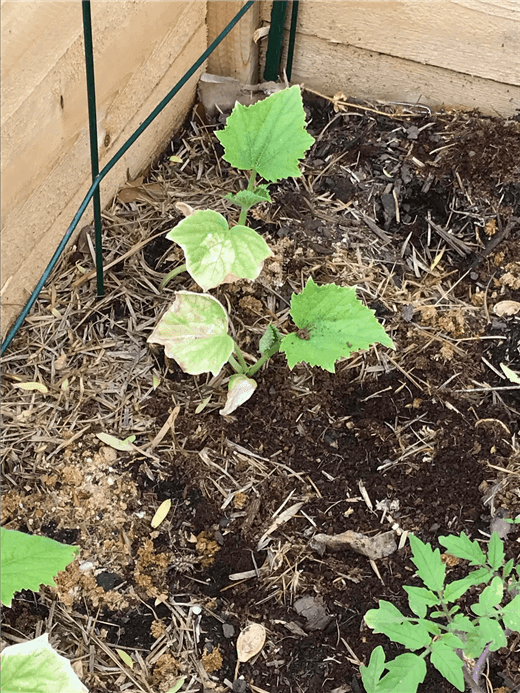
Cucumber Plants Not Growing
To ensure healthy cucumber growth, start with proper soil preparation. Test the soil and amend it with organic matter or compost to improve fertility and drainage. Plant cucumbers in a location that receives full sun and ensure they are spaced adequately to allow for good air circulation. Also, you can use an LED grow light as supplemental lighting. Water the plants consistently, keeping the soil moist but not waterlogged. Use mulch to help retain soil moisture and regulate temperature. Regularly inspect the plants for pests and diseases, and treat any issues promptly with organic or chemical controls as needed. Encourage pollination by planting flowers that attract pollinators like bees and butterflies. Additionally, consider using trellises to support the vines, which can improve air circulation and reduce the risk of disease.
2025 Spider Farmer® SF7000 650W LED Grow Light – June Special: Free GGS Smart Control Kit with Pre-Order
2025 Newest Version Spider Farmer® SF1000 100W Samsung LM301H EVO LED Grow Light For 2×2’/3×3′
2025 Newest Version Spider Farmer® SF1000D 100W Full Spectrum LED Grow Light Samsung Diodes For 2×2′
2025 Newest Version Spider Farmer® SF2000 200W Samsung LM301H EVO LED Grow Light For 4×2’/5×3′
2025 Newest Version Spider Farmer® SF2000Pro 200W Samsung LM301H EVO LED Grow Light
Buy the SF2000Pro + GGS Controller Kit ($209.99)— for just $30 more, you’ll get the GGS controller, sensors, and other add-ons.
Enjoy remote control, sunrise/sunset simulation, and overheat protection for your lights, helping you maximize yields. The SF2000 Pro is a premium LED grow light that is specifically engineered for square planting spaces. In contrast, the SF2000 is optimized for rectangular planting spaces.
2025 SF2000 LED Grow Light & GGS Smart Controller Bundle – | 200W Samsung LM301H EVO | 4’×2’/5’×3′ Coverage
- 1x SF2000 EVO LED Grow Light (with dimmer box)
- 1x Power Cord
- 2x Hanging Kits
- 2x Rope Ratchets
- 1 x GGS controller (with power supply and a wall-mountable metal rail)
- 1 x GGS temperature and humidity sensor
- 1 x GGS 2-in-1 adapter (for connecting the lights to the controller)
- 2 x RJ12 telephone line splitters (for expanding connections)
- 2.5m RJ12 cables 6pcs (for connecting devices)
- 0.25m RJ12 cable 1pc (for connecting between telephone line splitters)
- 4 x hook and loop straps (for organizing cables)
2025 SF2000pro LED Grow Light & GGS Smart Controller Bundle – | 200W Samsung LM301H EVO | 3×3′ Coverage
- 1x SF2000pro EVO LED Grow Light (with dimmer box)
- 1x Power Cord
- 2x Hanging Kits
- 2x Rope Ratchets
- 1 x GGS controller (with power supply and a wall-mountable metal rail)
- 1 x GGS temperature and humidity sensor
- 1 x GGS 2-in-1 adapter (for connecting the lights to the controller)
- 2 x RJ12 telephone line splitters (for expanding connections)
- 2.5m RJ12 cables 6pcs (for connecting devices)
- 0.25m RJ12 cable 1pc (for connecting between telephone line splitters)
- 4 x hook and loop straps (for organizing cables)
2025 SF4000 LED Grow Light & GGS Smart Controller Bundle – | 450W Samsung LM301H EVO | 4×4’/5×5′ Coverage
- 1x SF4000 LED Grow Light (with dimmer box)
- 1x Power Cord
- 4x YOYO Hanger Hook
- 1x Daisy Chain (RJ11)
- 1 x GGS controller (with power supply and a wall-mountable metal rail)
- 1 x GGS temperature and humidity sensor
- 1 x GGS 2-in-1 adapter (for connecting the lights to the controller)
- 2 x RJ12 telephone line splitters (for expanding connections)
- 2.5m RJ12 cables 6pcs (for connecting devices)
- 0.25m RJ12 cable 1pc (for connecting between telephone line splitters)
- 4 x hook and loop straps (for organizing cables)
2025 Spider Farmer® SF4000 450W Samsung LM301H EVO LED Grow Light For 4×4’/5×5′
Enjoy remote control, sunrise/sunset simulation, and overheat protection for your lights, helping you maximize yields. <<SF4000 Complete Grow Kits--Check More
Cucumber Plant Bacterial Wilt
Bacterial wilt in cucumber plants is caused by the bacterium Erwinia tracheiphila, which is primarily spread by cucumber beetles, including the striped cucumber beetle (Acalymma vittatum) and the spotted cucumber beetle (Diabrotica undecimpunctata). These beetles feed on the leaves of cucumber plants, creating wounds through which the bacteria enter the plant's vascular system. Once inside, the bacteria multiply and block the plant's water-carrying vessels, causing the plant to wilt and eventually die.
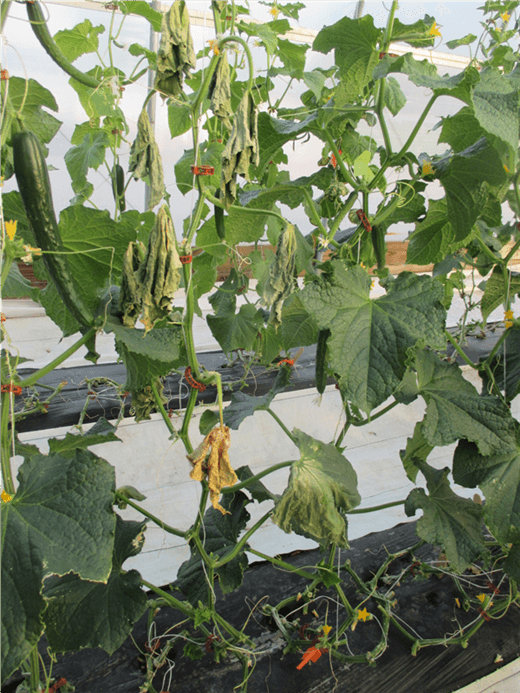
Cucumber Plant Bacterial Wilt
To prevent bacterial wilt, it is essential to control the cucumber beetle population. This can be achieved by using row covers to protect young plants from beetle infestation, regularly inspecting and hand-picking beetles, and applying insecticides as a last resort. Additionally, planting cucumber varieties that are resistant to bacterial wilt, such as 'Marketmore 76', 'Salad Bush', and 'Dasher II', can help reduce the risk of infection. Crop rotation is also an effective strategy, as it disrupts the life cycle of cucumber beetles and reduces the likelihood of bacterial wilt occurring.
Cucumber Fungus
Cucumber fungus is a common problem for cucumber plants. Among the cucumber fungus diseases, cucumber powdery mildew and downy mildew are two of the most prevalent ones. Powdery mildew appears as white or gray powdery spots on the leaves, stems, and fruit, eventually causing cucumber leaves to turn yellow and die. Downy mildew starts with yellow spots on the upper leaf surface, which turn brown and develop a downy white growth on the underside. These fungi thrive in humid conditions and can spread rapidly, reducing plant health and yield.
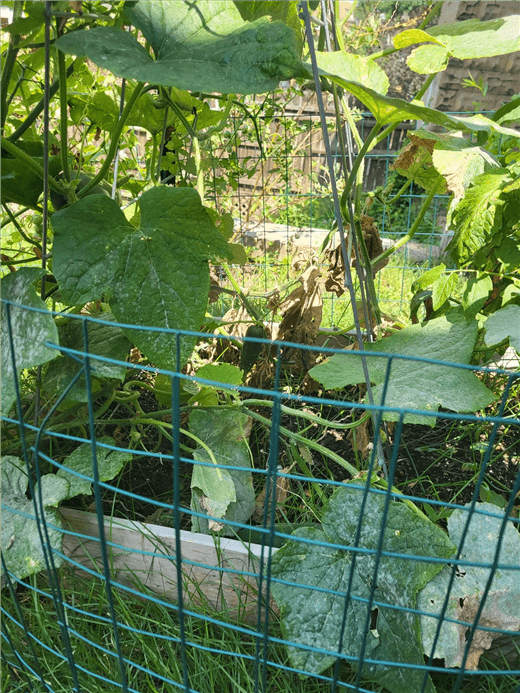
Cucumber Fungus
To prevent cucumber fungus, ensure good air circulation around the plants by spacing them adequately or using a ventilation system. Avoid overhead watering, as it can create a humid environment that favors fungal growth. Planting disease-resistant cucumber varieties can also significantly reduce the risk of fungal infections. If signs of fungal disease appear, treat the plants promptly with a fungicide, such as a copper-based fungicide for powdery mildew. Additionally, practicing crop rotation and removing infected plant debris can help prevent the recurrence of fungal diseases in the garden.
2025 New Spider Farmer 6″ Inline Ducting Fan with Speed Controller & Carbon Filter Ventilation System for Grow Tents, GGS Controller Controllable
- Four operating modes can be selected
- Set start & stop times
- Set running & standby speeds
- CO2 device On/Off control
2025 New Spider Farmer® 4” Inline duct Fan Kits 205 CFM with Speed Controller, Carbon Filter Grow Tent Ventilation System, GGS Controller Controllable
- Four operating modes can be selected
- Set start & stop times
- Set running & standby speeds
- CO2 device On/Off control
2025 New Spider Farmer® 4″ Inch 205 CFM Inline Fan with Speed Controller RJ12 Port Grow Tent Ventilation, GGS Controller Compatible
2025 New Spider Farmer® 4″ Inline Fan 205 CFM with GGS Controller Ventilation System for Indoor Grow
- Four operating modes can be selected
- Set start & stop times
- Set running & standby speeds
- CO2 device On/Off control
2025 New Spider Farmer® 6″ Inline Fan 402CFM with Speed Controller RJ12 Port, GGS Controller Compatible
2025 New Spider Farmer®4″ Inline Fan for Indoor Grow 205CFM with GGS Controller, Carbon Filter & Ducting Combo
- Four operating modes can be selected
- Set start & stop times
- Set running & standby speeds
- CO2 device On/Off control
2025 New Spider Farmer®6″ Inline Fan with GGS Controller 402 CFM Ventilation System for Grow Tents
- Four operating modes can be selected
- Set start & stop times
- Set running & standby speeds
- CO2 device On/Off control
2025 New Spider Farmer®6” Inline Fan Kits 402CFM with GGS Controller Carbon Filter & Ducting Combo Grow Tent Ventilation System
- Four operating modes can be selected
- Set start & stop times
- Set running & standby speeds
- CO2 device On/Off control
Bundle Sale I Spider Farmer 4 Inch Inline Duct Fan 205CFM + 4 Inch Air Carbon Filter With GGS Controller Kits
Bundle Sale I Spider Farmer 4 Inline Fan 205CFM with Speed Controller (with RJ12 Port) + 4 Inch Carbon Filter Ventilation System
White Leaves on Cucumber Plants
White spots on cucumber leaves are most commonly caused by powdery mildew, a fungal disease that thrives in warm, humid conditions. This fungus spreads through airborne spores, which can travel long distances and infect plants even if they are far from the source. The spores land on the leaves, pierce the plant tissue, and extract nutrients, leading to the formation of white, powdery patches. High humidity, poor air circulation, and plant stress due to underwatering or pest infestation can exacerbate the problem.
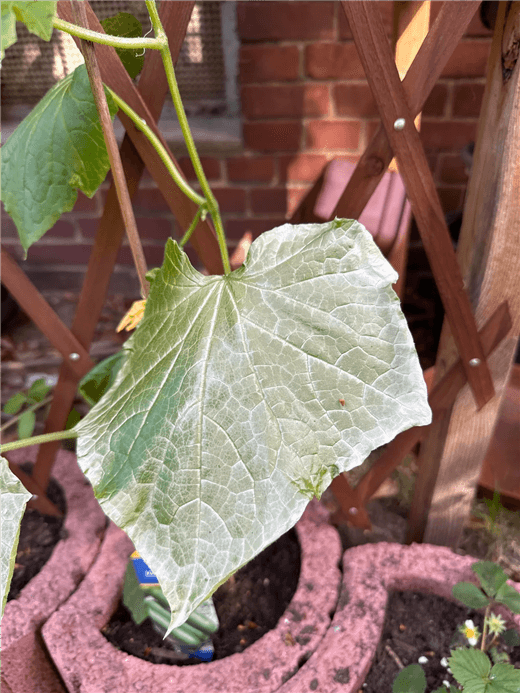
White Leaves on Cucumber Plants
To prevent powdery mildew, ensure that cucumber plants receive full sun and are spaced adequately to allow for good air circulation. Avoid overhead watering, as this can create a humid environment that favors fungal growth. Planting disease-resistant cucumber varieties can also significantly reduce the risk of infection. If signs of powdery mildew appear, treat the plants promptly with a fungicide, such as a baking soda solution or neem oil. Additionally, practicing crop rotation and removing infected plant debris can help prevent the recurrence of fungal diseases in the garden.
Yellow Spots on Leaves of Cucumber Plant
Yellow spots on cucumber leaves can be caused by several factors, including fungal diseases, bacterial infections, pest infestations, nutrient deficiencies, and environmental stress. Fungal diseases like downy mildew and powdery mildew are common culprits, thriving in humid conditions and causing yellow spots on leaves. Bacterial infections and viral diseases can also lead to yellowing and spotting. Nutrient deficiencies, such as a lack of nitrogen, iron, or potassium, often manifest as yellow spots on leaves. Overwatering or underwatering can stress the plant, leading to yellow leaves. Pest infestations, like aphids, spider mites, and cucumber beetles, can cause yellow spots by feeding on the leaves.
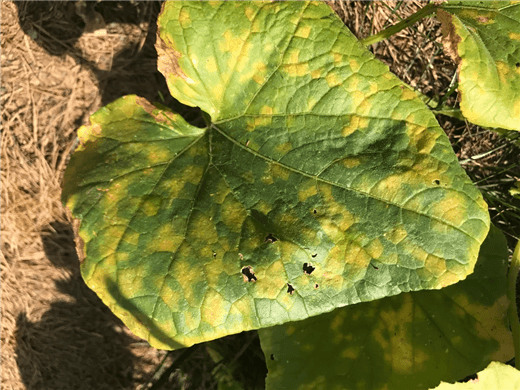
Yellow Spots on Leaves of Cucumber Plant
To prevent yellow spots on cucumber leaves, ensure good air circulation around the plants by spacing them adequately and avoiding overcrowding. Water the plants at the base to keep leaves dry and reduce the risk of fungal infections. Regularly monitor for pests and treat infestations promptly with insecticidal soap or neem oil. Plant disease-resistant varieties and practice crop rotation to minimize the risk of disease carryover. Maintain proper soil nutrition by testing the soil and applying balanced fertilizers as needed.
Cucumber Brown Spots on Leaves
Brown spots on cucumber leaves are commonly caused by fungal and bacterial infections, as well as environmental stressors and pest infestations. Fungal diseases such as downy mildew and powdery mildew can lead to brown spots, with symptoms including yellow spots that turn brown and necrotic, or white powdery growth that ages to brown. Bacterial infections, such as angular leaf spot and bacterial wilt, also cause brown spots, with angular lesions and wilting leaves being telltale signs. Environmental factors such as water stress, nutrient deficiencies, and sunscald can contribute to brown spots, as can pests like spider mites and squash bugs.
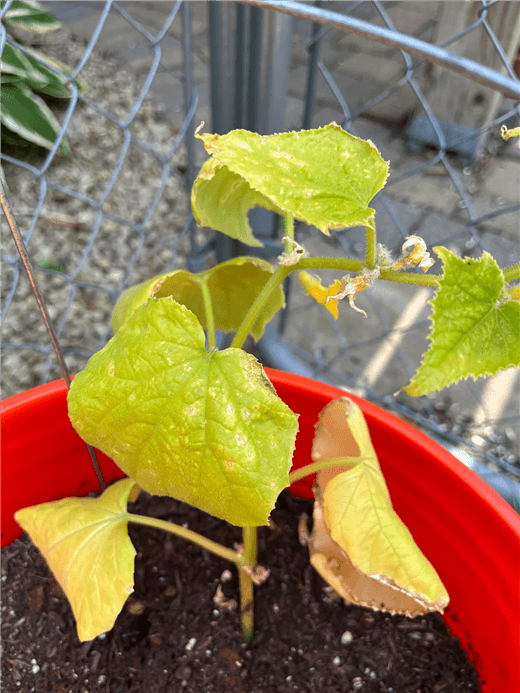
Cucumber Brown Spots on Leaves
To prevent brown spots on cucumber leaves, start with good cultural practices. Plant disease-resistant varieties, ensure adequate soil drainage, and avoid overhead watering to minimize the risk of fungal infections. Provide consistent moisture and fertilize appropriately to avoid water stress and nutrient deficiencies. Remove weeds and diseased plant debris to reduce the spread of pathogens. If brown spots appear, promptly remove infected leaves or fruits and apply copper-based fungicides for bacterial and fungal diseases. Use insecticidal soaps or neem oil to control pest infestations, and encourage natural predators like ladybugs and lacewings.
Holes in Cucumber Leaves
The holes in cucumber leaves are commonly caused by pests such as cucumber beetles, slugs, and caterpillars. Cucumber beetles, which can be either striped or spotted, feed on the leaves, creating holes and transmitting diseases like bacterial wilt. Slugs leave shiny trails and cause large, irregular holes, especially in moist conditions. Caterpillars, such as cabbage loopers, also chew irregular holes in the leaves.
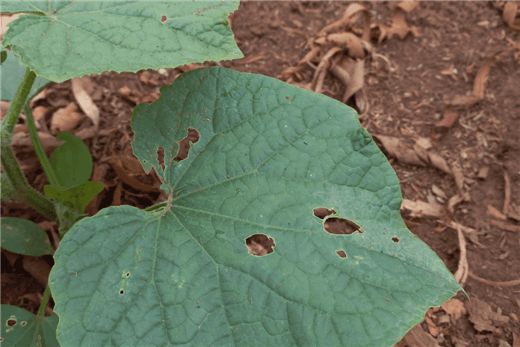
Holes in Cucumber Leaves
To prevent holes in cucumber leaves, start by maintaining good garden hygiene. Remove plant debris and weeds to eliminate potential habitats for pests. Use row covers to protect young plants from beetles and other pests, but remove them when the plants start to flower to allow pollination. Introduce beneficial insects like ladybugs, which prey on pests, and consider using organic insecticides such as neem oil. Regularly inspect your plants for signs of pests and remove any you find by hand. Additionally, planting pest-resistant cucumber varieties can help reduce the risk of damage.
Anthracnose Cucumber Diseases
Anthracnose in cucumbers is a fungal disease caused by the fungus Colletotrichum orbiculare. This pathogen can infect all above-ground parts of the plant, including leaves, stems, and fruits. The fungus thrives in warm, moist conditions, particularly when temperatures are between 68°F and 77°F. It spreads through infected seeds, plant debris, and soil. The spores can be carried by wind, rain, and garden tools, and they can survive in the soil for several years. Infected seeds and contaminated soil are common sources of initial infection, and the disease can spread rapidly in crowded plantings where humidity is high and air circulation is poor.
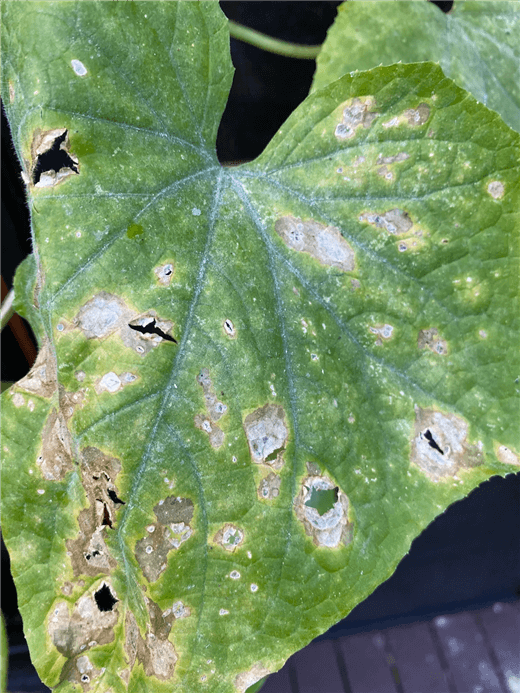
Anthracnose Cucumber Diseases
To prevent anthracnose in cucumbers, start with good cultural practices. Use clean, disease-free seeds from reputable sources and avoid planting in areas where cucurbits have been grown in the past three years. Ensure proper plant spacing to allow for good air circulation and reduce humidity. Water plants at the base to keep leaves dry, and avoid working in the garden when plants are wet. Remove and destroy infected plant debris at the end of the season to reduce the risk of overwintering spores. Consider using resistant cucumber varieties and applying fungicides as a preventive measure, especially during wet weather. Regularly sanitize garden tools to prevent the spread of spores.
Gummy Stem Blight
Cucumber Gummy Stem Blight is a fungal disease caused by Didymella bryoniae, which primarily affects cucurbits like cucumbers, melons, and pumpkins. The disease is characterized by water-soaked lesions on the stems, leaves, and fruits, which can eventually turn dark and mushy, leading to a gummy exudate.
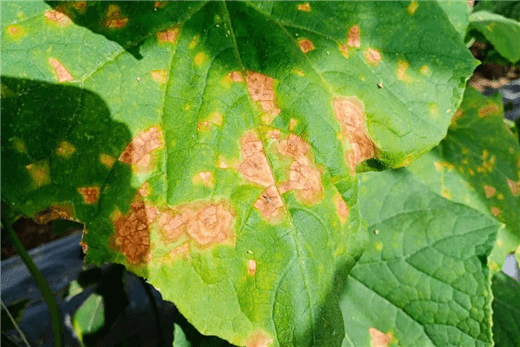
Gummy Stem Blight
Infected plants may exhibit wilting, stunted growth, and dieback, especially in warm, humid conditions. Management strategies include crop rotation, proper sanitation, and applying fungicides to prevent its spread, as early detection is crucial for minimizing damage.
Cucumber Plants Not Fruiting
Cucumbers not fruiting can be due to several factors, including poor pollination, insufficient sunlight, improper watering, and nutrient deficiencies. Cucumbers require adequate pollination to set fruit, and this process is often hindered by a lack of pollinators, such as bees, or by adverse weather conditions that limit their activity. Insufficient sunlight, as cucumbers need at least 6 to 8 hours of direct sun daily, can also lead to poor fruiting. Overwatering or underwatering can stress the plants, reducing their ability to produce fruit. Nutrient deficiencies, particularly a lack of phosphorus, can also inhibit fruit development. Additionally, overcrowding and poor air circulation can lead to diseases that affect fruit production.
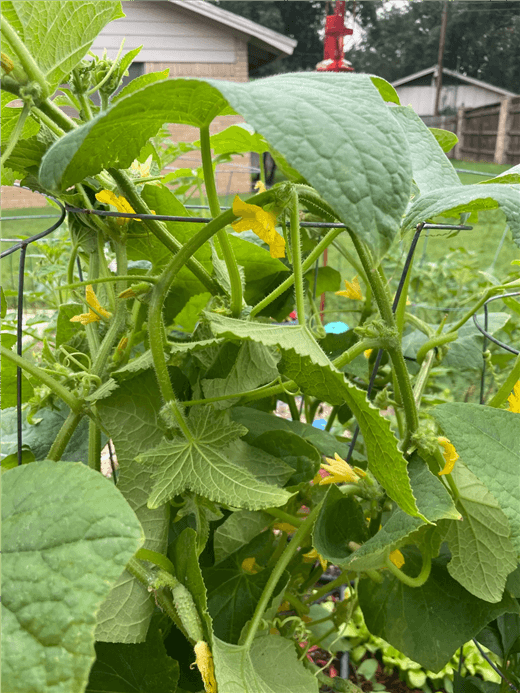
Cucumber Plants Not Fruiting
To ensure that cucumber plants produce fruit, start by planting them in a location that receives full sun and has well-drained, nutrient-rich soil. Amend the soil with organic matter or compost to improve fertility and drainage. Water the plants consistently, keeping the soil evenly moist but not waterlogged. Encourage pollinators by planting flowers that attract bees and other beneficial insects. Hand-pollination can also be done by transferring pollen from male to female flowers using a small brush. Ensure proper plant spacing to allow for good air circulation and reduce the risk of disease. Regularly inspect the plants for pests and diseases and treat any issues promptly. Applying a balanced fertilizer with a higher phosphorus content can also support fruit development.
How to Treat Cucumber Plant Disease?
If you discover the cucumber plant issues, take the common measures to treat the diseases.
Powdery Mildew
- Organic Methods: Use a baking soda solution (1 tablespoon of baking soda per gallon of water) or neem oil to treat infected plants. Spray the solution on the leaves, ensuring thorough coverage.
- Chemical Methods: Apply a fungicide specifically designed for powdery mildew. Follow the instructions on the label for proper application.
Downy Mildew
- Organic Methods: Use a copper-based fungicide or a homemade solution of baking soda and water. Spray the solution on the leaves.
- Chemical Methods: Apply a fungicide designed for downy mildew. Follow the instructions on the label for proper application.
Bacterial Wilt
- Organic Methods: There is no cure for bacterial wilt. Remove and destroy infected plants to prevent the spread of the disease.
Anthracnose
- Organic Methods: Remove and destroy infected leaves, stems, and fruits. Use a copper-based fungicide or a baking soda solution to treat the plants.
Angular Leaf Spot
- Organic Methods: Remove and destroy infected plants. Use clean garden tools to prevent the spread of bacteria.
Cucumber Mosaic Virus
- Organic Methods: There is no cure for the mosaic virus. Remove and destroy infected plants to prevent the spread of the disease.
Conclusion
In conclusion, cucumber plants are susceptible to a variety of diseases, including fungal, bacterial, and viral infections. By recognizing cucumber plant issues, you can take timely action to mitigate their impact. Implementing preventive measures like proper plant spacing, adequate sunlight, consistent watering, and the use of disease-resistant varieties can significantly reduce the incidence of these diseases.

